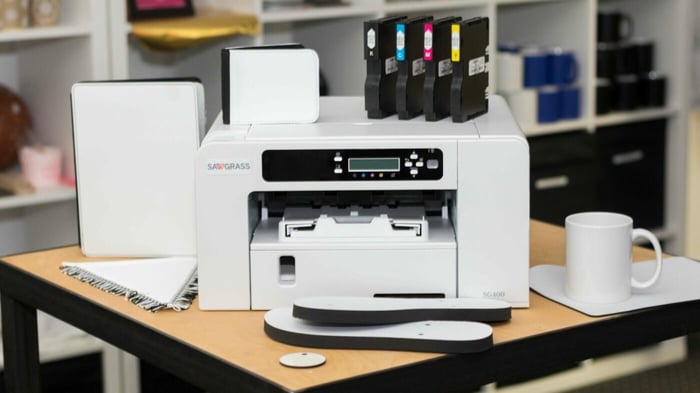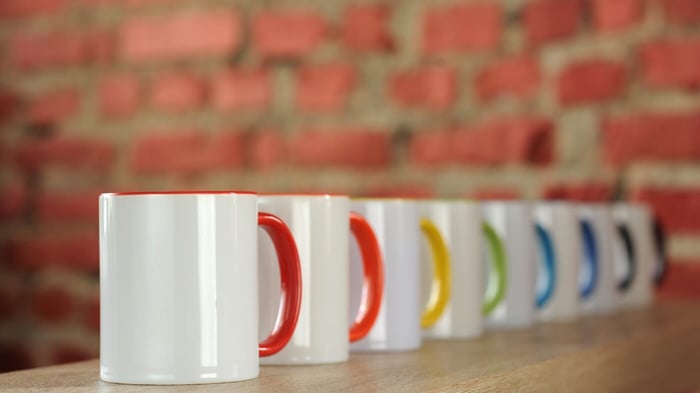When it comes to printing, there are different types of inks and papers available in the market. One question that often arises is whether sublimation ink can be used for regular printing. In this article, we will delve into this topic and provide you with detailed insights into using sublimation ink for regular printing. We will also discuss other related questions regarding sublimation paper, regular paper for sublimation, and the compatibility of different printers with sublimation ink. Let's explore the answers to these questions and gain a better understanding of the possibilities and limitations.
Many individuals wonder if they can utilize their sublimation ink for regular printing purposes. However, there are several factors to consider before attempting to use sublimation ink for regular printing tasks. Let's discuss these factors in detail.
Using sublimation ink for regular printing is not recommended due to factors such as color dullness, higher cost, ink absorption issues, and accounting considerations. It is also advised to use sublimation paper strictly for sublimation purposes, as using it for regular printing can have cost implications and may not yield desired results.
The Color will be Dull
When sublimation inks are printed onto paper, whether it is standard paper or sublimation paper, the colors appear dull. The vibrant colors are only achieved when the ink is sublimated onto the surface of a substrate using heat. Consequently, the colors on the printed paper retain a washed-out appearance. While this is an ideal process for sublimation, it is not suitable if the printed paper itself is the end product.
The Cost of the Ink
Sublimation ink is not free, and using it for purposes other than sublimation projects means that you won't be fully utilizing the benefits of this specialized ink. Moreover, you will have to replace the sublimation ink sooner, resulting in additional expenses.
The Ink will Soak into the Paper and Colors will Bleed
Sublimation paper possesses unique properties that prevent the ink from soaking into the fibers, allowing for easy release of the ink with heat. However, when regular paper is used, it absorbs the ink, resulting in lines that may lack crispness and colors bleeding at boundaries.
It Changes Your Accounting
If you are keeping track of the ink consumption for your sublimation projects over time, using sublimation ink for non-sublimation purposes will impact your calculations. It becomes challenging to accurately determine the ink usage and associated costs when the ink is used for both sublimation and regular printing.
While it is technically possible to print on regular paper using sublimation ink as a one-time solution, the results will not be ideal. However, if you intend to regularly print with sublimation ink on standard paper, it is not recommended. The cost implications and impact on your accounting can be significant. Therefore, it is advisable to use the appropriate ink for each printing purpose to ensure optimal results and cost-effectiveness.

Can You Convert Your Sublimation Printer back to a Regular Printer?
If you have converted your inkjet printer into a sublimation printer and now want to revert it to its original functionality, it is indeed possible. However, the process is not instantaneous and requires a transition period. Here's what you need to know about transitioning from sublimation ink to standard ink.
How to Transition from Sublimation Ink to Standard Ink
If you own an Epson Ecotank printer, the best way to convert it back to a regular printer is by gradually filling the ink tanks with regular ink as they deplete. This approach ensures a smoother transition, albeit with some variations in color consistency. Additionally, some colors may be depleted faster than others due to individual usage patterns, prolonging the overall transition to standard ink.
It is essential to note that attempting to siphon out old ink using syringes or disconnecting tubing can cause damage to the precision ink delivery system. These actions may result in the need to replace your printer. Therefore, it is strongly advised not to attempt these methods.
Can You Use Sublimation Paper for Regular Printing?
Using sublimation paper for regular printing purposes may seem like a viable option to some, but it is worth considering the implications before doing so. Let's discuss the factors associated with using sublimation paper for regular printing.
Sublimation Paper is Expensive
Compared to regular copy paper, sublimation paper tends to be significantly more expensive. It is usually sold in packages containing 110 sheets, with prices averaging around $15.00 per package or approximately 14 cents per sheet. In contrast, standard copy paper costs just over 1 cent per sheet, making it a considerably cheaper alternative.
Sublimation Paper Doesn't Look or Feel like Regular Paper
Sublimation paper is thicker and often features a watermark on its backside. If you were to present a printout on sublimation paper to someone, they might find it unusual or unexpected due to its distinct appearance and texture.
Substituting Sublimation Paper Impacts Your Accounting
For businesses involved in sublimation, keeping track of costs associated with supplies is crucial. Every sheet of sublimation paper used for non-sublimation purposes adds to the business's expenses without contributing to the creation of corresponding sublimation products that generate income.
Considering these factors, it is advisable to use sublimation paper strictly for sublimation purposes and explore more cost-effective alternatives for regular printing needs.
Can You Print with Regular Ink on Sublimation Paper?
The question of using regular inkjet ink on sublimation paper arises occasionally. Let's address this query and its implications.
Sublimation Requires the Proper Ink
Sublimation ink is specifically formulated to adhere to the sublimation paper and release upon heating. Simply using sublimation paper does not enable regular inkjet ink to achieve sublimation results.
Paper Substitution in a Pinch
In certain situations, you might find yourself with only sublimation paper available and a need to print using regular inkjet ink. While this is not the recommended approach, it may work to some extent. The inkjet ink will transfer onto the sublimation paper, but there could be issues with smearing, running, or bleeding of the image. Drying time may also be longer, and different paper brands could yield varying results.
Considering the specific properties of sublimation ink and paper, it is not recommended to use regular ink on sublimation paper. While it may work in emergency situations, the outcomes may not meet expectations, and it is preferable to utilize the appropriate ink and paper combination for the best results.
Can You Use Sublimation Ink on Regular Paper?
We have already discussed using sublimation ink for regular printing, but what about using it on regular paper? Let's explore this question.
The use of sublimation ink on regular paper is not recommended for several reasons, including the following:
-
Lower Quality Transfer: Sublimation ink transfers onto the substrate, but the resulting image quality is not as high as when using sublimation paper. The colors may not be as vibrant, fine details may lack crispness, and there may be gaps in coverage.
-
Ink Utilization: Sublimation paper has unique properties that ensure the ink is released upon heating, resulting in high transfer rates (typically 95% - 98%). When using regular paper, less ink will transfer, and more ink will remain bound to the paper. This leads to inefficient ink utilization, with a significant portion of the ink being wasted on the transfer paper that gets discarded.
Considering these factors, it is advisable to stick to using sublimation paper for sublimation printing and not use sublimation ink on regular paper.
Can You Use a Regular Inkjet Printer to Sublimate?
Using a regular inkjet printer for sublimation purposes is not recommended. Inkjet ink is specifically manufactured to adhere to the paper and produce satisfactory results for standard printing tasks. It lacks the necessary properties for sublimation, such as heat activation and efficient ink transfer.
For sublimation printing, it is best to use printers explicitly designed for sublimation, like the Sawgrass SG500. These printers are optimized for sublimation ink and deliver the best outcomes for sublimation projects.
Do You Need Two Printers?
If you are serious about your sublimation endeavors, whether as a hobby or a business, it is highly recommended to have separate printers for different purposes. Here's why:
-
Sublimation Printer: Having a dedicated sublimation printer allows you to achieve optimal results in your sublimation projects. These printers are specifically designed for sublimation ink, ensuring accurate color reproduction and efficient ink transfer.
-
Business Printer: Separating your sublimation printer from your office or administrative printer is a wise decision. Investing in a black and white laser printer for invoices, fliers, or other office-related tasks provides better efficiency and cost-effectiveness.
By keeping your sublimation tools separate from your office equipment, you can maintain a focused and streamlined workflow, optimizing both quality and productivity.
Wrapping Up
Using sublimation ink for regular printing is not recommended due to several factors, including color dullness, cost implications, ink absorption, and accounting considerations. It is also important to note that transitioning from sublimation ink to standard ink requires a gradual process to avoid damage to the printer.
Furthermore, sublimation paper is designed specifically for sublimation purposes and is not an ideal choice for regular printing due to its higher cost and distinct characteristics. Using regular ink on sublimation paper or regular paper for sublimation results in compromised quality and inefficient ink utilization.
To achieve the best results in sublimation printing, it is advisable to use specialized sublimation printers, sublimation ink, and sublimation paper. By separating your sublimation tools from your office equipment, you can maintain efficiency and produce high-quality sublimation products.
FAQs
-
Can I use regular inkjet ink in a sublimation printer? No, regular inkjet ink is not suitable for sublimation printing. Sublimation ink has unique properties necessary for the sublimation process, such as heat activation and efficient transfer onto substrates.
-
Can I use regular paper for sublimation printing? While it is technically possible to use regular paper for sublimation, the results will not be of the same quality as when using sublimation paper. Regular paper may result in lower color vibrancy, less crisp details, and inefficient ink utilization.
-
Can I use sublimation ink on regular copy paper for regular printing? Using sublimation ink on regular copy paper for regular printing is not recommended. The colors will appear dull, and the ink may bleed and soak into the paper, resulting in suboptimal print quality.
-
Can I convert my sublimation printer back to a regular printer? Yes, it is possible to convert a sublimation printer back to a regular printer. However, it requires a transition process, and it is important to follow manufacturer guidelines to avoid any damage to the printer.
-
Do I need two printers for sublimation and regular printing? If you are serious about sublimation printing or have a sublimation business, having separate printers for sublimation and regular printing tasks is recommended. This ensures optimal results and efficient workflow management.





